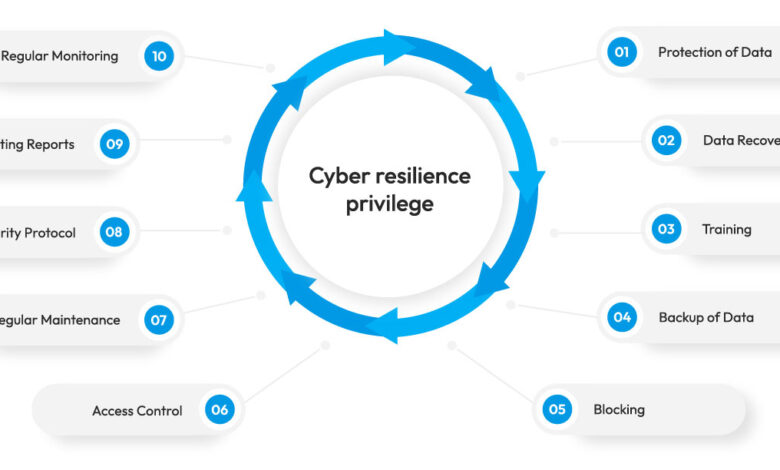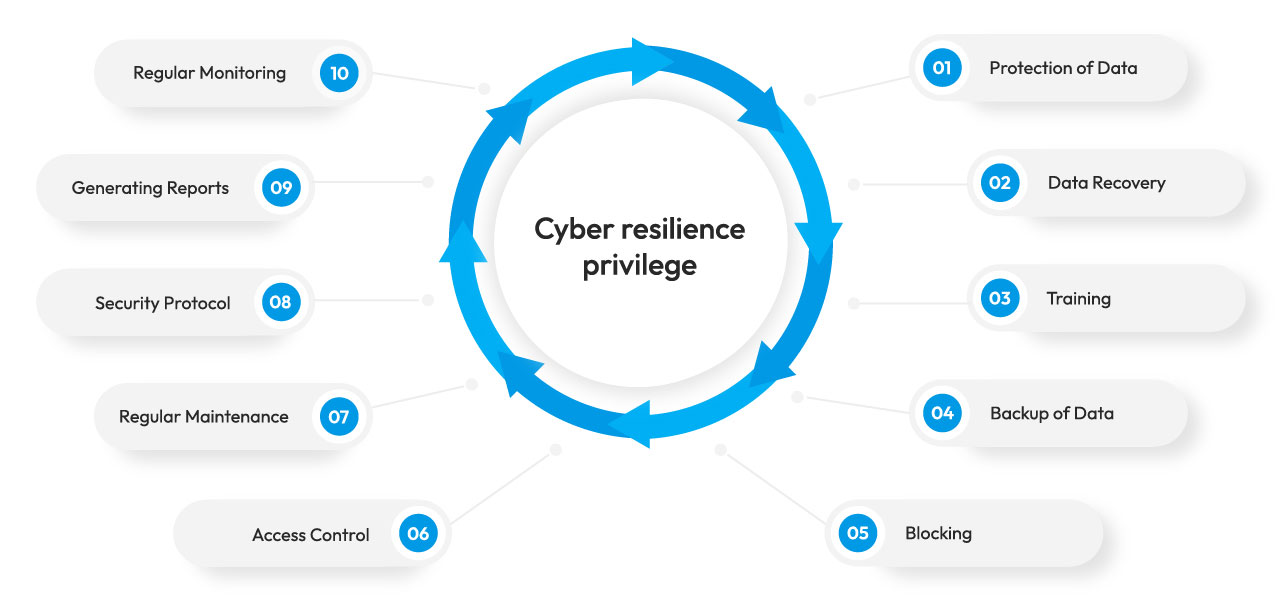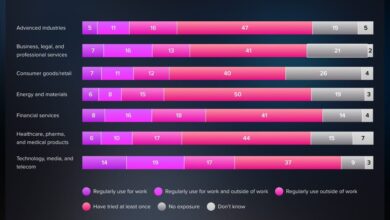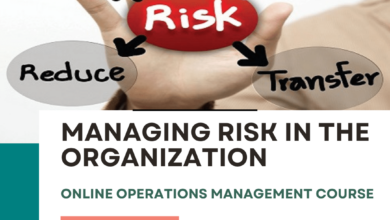
Data & Cyber Resilience Definition and Attainment
Definition of data resilience and cyber resilience and their attainment – Data & Cyber Resilience: Definition and Attainment – sounds serious, right? But it doesn’t have to be! Think of it like this: your digital life is a castle, and data resilience and cyber resilience are its walls and moats. This post breaks down what these crucial concepts mean, how they work together, and – most importantly – how to build them up so your digital kingdom stays safe and sound.
We’ll cover everything from practical strategies for small businesses to the latest tech for safeguarding your data in the cloud.
We’ll explore the core components of both data and cyber resilience, highlighting the key differences between them and how they intertwine. We’ll delve into practical examples, offering actionable steps to implement robust resilience strategies, regardless of your organization’s size. Get ready to learn how to protect your digital assets and build a fortress against the ever-evolving threats in the digital landscape.
Defining Data Resilience
Data resilience is the ability of an organization to maintain the availability, integrity, and confidentiality of its data in the face of disruptive events. It’s not just about recovering data after a loss, but about minimizing the impact of such events on business operations and ensuring continuous access to critical information. A resilient data strategy anticipates potential threats and incorporates preventative measures to protect against data loss and ensure business continuity.
Core Components of Data Resilience
Data resilience relies on a multi-faceted approach. It’s not a single solution but a combination of strategies working together. These core components include robust data backup and recovery systems, comprehensive security measures to prevent unauthorized access or modification, disaster recovery planning that addresses various scenarios, and regular testing and auditing of the entire system. The goal is to create a system that is not only able to withstand disruptions but also to recover quickly and efficiently.
Examples of Data Loss Scenarios and Mitigation through Data Resilience
Imagine a ransomware attack encrypting your company’s financial records. A robust data resilience strategy would include regular backups stored offline and a tested recovery plan to restore the data from these backups, minimizing downtime. Another scenario could be a natural disaster, like a flood, destroying your server room. Data resilience, in this case, would involve geographically diverse data replication and a robust cloud-based disaster recovery plan, allowing for swift restoration of services from a secondary location.
In both instances, the speed and effectiveness of recovery are significantly improved with a well-defined data resilience strategy compared to relying solely on backups.
Key Differences Between Data Resilience and Data Backup Strategies
While data backup is a crucial component of data resilience, they are not interchangeable. Data backup focuses solely on creating copies of data for recovery purposes. Data resilience, however, is a broader concept that encompasses prevention, protection, detection, and recovery. It involves proactive measures to prevent data loss, such as implementing strong security protocols, and robust procedures for detecting and responding to incidents.
Essentially, data backup is a
part* of a comprehensive data resilience strategy, but resilience goes beyond simply having backups; it’s about ensuring those backups are secure, accessible, and part of a larger, well-rehearsed recovery plan.
Hypothetical Data Resilience Plan for a Small Business, Definition of data resilience and cyber resilience and their attainment
For a small bakery, a simple yet effective data resilience plan might involve:
- Daily backups of point-of-sale (POS) data and customer information to an external hard drive stored off-site.
- Weekly backups of financial records and recipes to a cloud storage service.
- A documented disaster recovery plan outlining steps to restore data and operations in case of a fire or other incident. This plan should include contact information for IT support and key personnel.
- Regular testing of the backup and recovery procedures to ensure they are functional and efficient.
- Employee training on data security best practices, including password management and phishing awareness.
Data replication could involve using a cloud service to automatically replicate critical data to a geographically separate location. Recovery procedures should be clearly documented and tested regularly.
Best Practices for Ensuring Data Resilience in Cloud Environments
Leveraging the cloud for data resilience offers significant advantages, but it also requires careful planning. Best practices include:
- Utilizing cloud-based backup and recovery services that offer features like versioning and immutability to protect against ransomware attacks.
- Implementing multi-region replication to ensure data availability even if one region experiences an outage.
- Configuring appropriate access controls and security settings to protect data from unauthorized access.
- Regularly monitoring cloud security logs and alerts to detect and respond to potential threats.
- Leveraging cloud-native security tools and services, such as intrusion detection systems and security information and event management (SIEM) solutions.
Regularly reviewing and updating the cloud security posture is crucial to maintain a high level of data resilience.
Defining Cyber Resilience
Cyber resilience goes beyond simply preventing cyberattacks; it’s about the ability of an organization to anticipate, withstand, recover from, and adapt to disruptions caused by cyber threats. It encompasses the entire lifecycle of a cyber event, from prevention to recovery and continuous improvement. Unlike data resilience, which focuses solely on the protection and recovery of data, cyber resilience takes a holistic view, encompassing all aspects of an organization’s IT infrastructure and operations.Cyber resilience and data resilience are intrinsically linked.
Data resilience is a crucial component of a broader cyber resilience strategy. Without robust data resilience, an organization’s ability to recover from a cyberattack is severely hampered, regardless of how well other aspects of cyber resilience are addressed. Conversely, a strong cyber resilience framework will inherently include mechanisms for protecting and restoring data, making data resilience a necessary subset of the larger goal.
Critical Elements of a Robust Cyber Resilience Framework
A robust cyber resilience framework needs multiple layers of defense and a proactive approach to risk management. Key elements include a comprehensive security architecture, robust incident response planning, employee training and awareness programs, regular security assessments and penetration testing, and continuous monitoring and improvement of security controls. This layered approach ensures that even if one layer fails, others are in place to mitigate the impact.
For example, a strong firewall (first layer) might be bypassed, but intrusion detection systems (second layer) and data loss prevention (DLP) tools (third layer) can still detect and contain the threat.
Comparison of Approaches to Building Cyber Resilience
Organizations employ various approaches to building cyber resilience, often tailored to their specific needs and resources. A reactive approach focuses primarily on incident response and recovery after an attack, whereas a proactive approach prioritizes prevention and preparedness. A layered security approach, as mentioned earlier, provides multiple layers of defense to mitigate the impact of a successful attack. A risk-based approach focuses on identifying and mitigating the most significant threats to the organization.
The optimal approach is often a combination of these, leveraging proactive prevention measures alongside reactive response capabilities. For instance, a financial institution might utilize a risk-based approach, prioritizing the protection of sensitive customer data above all else, while a smaller business might focus on a layered security approach, using readily available and cost-effective tools.
The Role of Incident Response Planning in Achieving Cyber Resilience
Incident response planning is paramount to achieving cyber resilience. A well-defined plan Artikels the steps an organization will take in the event of a cyberattack. This includes procedures for identifying and containing the attack, recovering affected systems and data, and communicating with stakeholders. Regular testing and updating of the incident response plan is crucial to ensure its effectiveness.
A realistic scenario-based exercise, such as simulating a ransomware attack, allows organizations to identify weaknesses in their response capabilities and make necessary improvements. This proactive approach ensures a faster and more effective recovery process, minimizing downtime and potential financial losses. Consider the case of a major retailer who suffered a data breach; their well-defined incident response plan allowed them to quickly contain the breach, notify affected customers, and restore operations within a relatively short timeframe, minimizing reputational damage.
Essential Cyber Resilience Measures for Organizations of Varying Sizes
The specific cyber resilience measures required will vary depending on the size and nature of the organization. However, certain measures are essential for all organizations.
- Regular Security Awareness Training: Educating employees about phishing scams, social engineering, and safe password practices is crucial for all organizations, regardless of size.
- Multi-Factor Authentication (MFA): Implementing MFA adds an extra layer of security, making it significantly harder for attackers to gain unauthorized access to systems and data.
- Data Backup and Recovery: Regularly backing up data to a secure offsite location is vital for ensuring business continuity in the event of a data loss incident.
- Vulnerability Scanning and Penetration Testing: Regularly scanning for vulnerabilities and conducting penetration testing helps identify and address security weaknesses before they can be exploited by attackers.
- Incident Response Plan: Developing and regularly testing an incident response plan is essential for effectively managing and recovering from cyberattacks.
- Security Information and Event Management (SIEM): For larger organizations, a SIEM system can provide centralized monitoring and analysis of security events, enabling quicker detection and response to threats.
Attaining Data Resilience

Data resilience isn’t a destination; it’s an ongoing journey requiring proactive planning and consistent effort. Building a robust data resilience strategy involves a multi-faceted approach, encompassing technology, processes, and people. This section Artikels a practical roadmap to achieve and maintain a high level of data resilience within your organization.
Implementing Data Resilience Strategies: A Step-by-Step Guide
Effective data resilience is built on a solid foundation of well-defined strategies. Implementing these strategies requires a systematic approach, moving from assessment to ongoing monitoring and improvement.
- Conduct a Data Risk Assessment: This crucial first step identifies critical data assets, potential threats (both internal and external), and vulnerabilities within your systems. A thorough assessment will highlight areas needing immediate attention and guide subsequent strategy development. This could involve questionnaires, interviews with key personnel, and vulnerability scans.
- Develop a Data Backup and Recovery Plan: This plan Artikels procedures for backing up critical data, storing backups securely (both on-site and off-site), and restoring data in case of failure. The plan should specify backup frequencies, retention policies, and testing procedures. For example, a 3-2-1 backup strategy (three copies of data, on two different media, with one copy offsite) is a widely accepted best practice.
- Establish Data Governance Policies: Clear policies regarding data access, modification, and deletion are essential. These policies should define roles and responsibilities, ensuring data integrity and accountability. They should also address data classification and handling of sensitive information, complying with relevant regulations like GDPR or HIPAA.
- Implement Data Security Measures: This includes deploying robust security technologies such as firewalls, intrusion detection systems, and encryption to protect data from unauthorized access and cyberattacks. Regular security audits and penetration testing are vital to identify and address vulnerabilities proactively.
- Monitor and Improve: Data resilience isn’t a “set it and forget it” proposition. Continuous monitoring of your systems and processes is crucial to identify potential weaknesses and make necessary adjustments. Regular reviews of your backup and recovery plan, security measures, and data governance policies are vital for ongoing improvement.
Selecting Appropriate Data Protection Technologies
The selection of data protection technologies should align with the specific needs and risk profile of your organization. Consider factors such as data volume, sensitivity, and recovery time objectives (RTOs) and recovery point objectives (RPOs).
- Backup Software: Numerous backup solutions are available, ranging from simple file-level backups to enterprise-grade solutions with features like deduplication and encryption. The choice depends on the scale and complexity of your data environment.
- Storage Solutions: Options include on-site storage (e.g., SAN, NAS), cloud storage (e.g., AWS S3, Azure Blob Storage), and hybrid approaches. Cloud storage offers scalability and cost-effectiveness, while on-site storage provides greater control and potentially lower latency.
- Data Replication: Techniques like synchronous and asynchronous replication ensure data availability in case of primary system failure. Synchronous replication provides immediate data consistency but may impact performance, while asynchronous replication offers higher performance but introduces a slight delay in data consistency.
- Disaster Recovery as a Service (DRaaS): DRaaS providers offer comprehensive disaster recovery solutions, including infrastructure, software, and support. This is a cost-effective option for organizations lacking the resources to build and maintain their own DR infrastructure.
Data Recovery Procedures and Their Effectiveness
A well-defined data recovery procedure is crucial for minimizing downtime and data loss. Regular testing ensures the plan’s effectiveness.
For example, a recovery procedure might involve restoring data from a backup server to a secondary server, followed by testing application functionality. The effectiveness is measured by the RTO (time to restore service) and RPO (data loss during downtime). A well-executed recovery should demonstrate that the RTO and RPO meet the pre-defined targets.
Regularly Testing Data Resilience Mechanisms
Testing is the only way to validate the effectiveness of your data resilience strategies. Regular testing should cover all aspects of your plan, from data backups to disaster recovery procedures.
This includes full system recovery tests, partial system recovery tests, and individual component tests. These tests should be documented, and results should be analyzed to identify areas for improvement. Regular testing ensures that your plans are up-to-date and your staff is adequately trained. The frequency of testing should depend on the criticality of the data and the potential impact of downtime.
For instance, critical systems might require weekly testing, while less critical systems might only require monthly testing.
Staff Training in Maintaining Data Resilience
Staff training is paramount to ensuring data resilience. Employees need to understand their roles and responsibilities in protecting and recovering data.
Data resilience and cyber resilience are crucial; they’re about ensuring your data survives attacks and outages. Achieving this often involves robust systems and proactive security measures. Building these systems is easier now with advancements like low-code/no-code platforms; check out this article on domino app dev the low code and pro code future for more on efficient development.
Ultimately, strong data resilience and cyber resilience depend on a well-architected, secure foundation.
Training programs should cover data security best practices, backup and recovery procedures, and incident response protocols. Regular refresher courses and simulations are important to maintain awareness and preparedness. For example, simulated ransomware attacks can help employees recognize and respond to potential threats effectively. This proactive approach helps mitigate human error, a significant cause of data breaches and data loss.
Attaining Cyber Resilience
Cyber resilience isn’t a destination; it’s a continuous journey requiring proactive planning, robust implementation, and ongoing adaptation. Building a truly resilient organization demands a multi-faceted approach encompassing risk assessment, security awareness, robust policies, effective controls, and a well-defined incident response plan. Let’s delve into the key steps involved.
Conducting a Comprehensive Cyber Risk Assessment
A thorough cyber risk assessment is the cornerstone of any cyber resilience strategy. This process involves identifying potential threats, vulnerabilities, and their potential impact on your organization. It begins with identifying assets – everything from servers and databases to intellectual property and customer data. Next, we assess vulnerabilities – weaknesses in systems, applications, or processes that could be exploited.
This often involves vulnerability scanning and penetration testing. Finally, we evaluate the likelihood and impact of various threats, such as malware attacks, phishing scams, or denial-of-service attacks. The results are used to prioritize mitigation efforts, focusing on the highest-risk areas. This might involve assigning risk scores based on likelihood and impact, using a standardized framework like NIST’s Cybersecurity Framework.
The outcome should be a prioritized list of actions to reduce risk.
Designing a Security Awareness Training Program
Human error remains a significant factor in many cyber security breaches. A comprehensive security awareness training program is crucial for fostering a security-conscious culture. This program should be tailored to the specific roles and responsibilities within the organization. For example, technical staff might receive training on secure coding practices, while administrative staff might focus on phishing awareness and password management.
Training should be interactive, engaging, and regularly updated to reflect evolving threats. Simulations, such as mock phishing attacks, can effectively reinforce learning and identify vulnerabilities in employee awareness. Regular refresher training is vital to maintain a high level of awareness and to adapt to new threats and techniques. Tracking participation and measuring the effectiveness of the program is also important.
Developing and Implementing Security Policies and Procedures
Clear, concise, and consistently enforced security policies and procedures are essential for maintaining cyber resilience. These policies should cover areas such as access control, data security, incident response, and acceptable use of company resources. They should be easily accessible to all employees and regularly reviewed and updated. Procedures should Artikel step-by-step instructions for common tasks and situations, ensuring consistency and reducing the risk of human error.
For example, a detailed incident response plan should Artikel procedures for detecting, containing, eradicating, recovering from, and learning from a cyber security incident. Regular audits and reviews are essential to ensure that policies and procedures remain effective and aligned with the organization’s evolving needs.
Implementing Security Controls and Technologies
A layered security approach is vital. This involves implementing a combination of technical and administrative controls to protect against various threats. Examples of technical controls include firewalls, intrusion detection/prevention systems (IDS/IPS), antivirus software, data loss prevention (DLP) tools, and multi-factor authentication (MFA). Administrative controls include access control lists (ACLs), security awareness training (as discussed above), and regular security audits.
These controls should be integrated and work together to provide comprehensive protection. Regular updates and patching are crucial to maintain the effectiveness of these technologies. Choosing the right technology depends on the organization’s specific needs and risk profile.
Managing and Responding to Cyber Security Incidents
A robust incident response plan is crucial for minimizing the impact of cyber security incidents. This plan should Artikel procedures for detecting, containing, eradicating, recovering from, and learning from an incident. It should include clearly defined roles and responsibilities, communication protocols, and escalation procedures. Regular testing and drills are vital to ensure that the plan is effective and that personnel are adequately trained.
Post-incident analysis is crucial to identify the root cause of the incident and to implement measures to prevent similar incidents from occurring in the future. This includes identifying vulnerabilities exploited during the incident and implementing necessary mitigations.
Incident Response Strategies Comparison
| Strategy | Advantages | Disadvantages | Applicability |
|---|---|---|---|
| Reactive Containment | Quick response to immediate threats, minimizes immediate damage | May not address root cause, potentially costly in the long run | Suitable for immediate, localized threats |
| Proactive Prevention | Reduces likelihood of incidents, cost-effective in the long run | Requires significant upfront investment, ongoing maintenance | Best for organizations with high risk tolerance |
| Hybrid Approach | Balances prevention and reaction, cost-effective and adaptable | Requires careful planning and coordination | Suitable for most organizations |
| Third-Party Incident Response | Access to specialized expertise, reduced internal burden | Can be expensive, potential for communication issues | Appropriate for complex incidents or lack of internal expertise |
Interrelation of Data and Cyber Resilience
Data and cyber resilience, while distinct concepts, are deeply intertwined. A robust security posture requires a holistic approach that recognizes and addresses the vulnerabilities impacting both, leveraging synergies to create a more resilient overall system. Ignoring this interconnectedness leaves organizations vulnerable to cascading failures and amplified impact from attacks.
Vulnerability Comparisons
Data resilience focuses on protecting the availability, integrity, and confidentiality of data itself, regardless of its location. Cyber resilience, on the other hand, centers on the ability of an organization’s IT infrastructure and systems to withstand and recover from cyberattacks. While distinct, vulnerabilities often overlap. For example, a weak password policy (a cyber vulnerability) directly impacts data resilience by making sensitive data more accessible.
Similarly, insufficient data backups (a data resilience weakness) can cripple an organization’s ability to recover from a ransomware attack (a cyber incident). Both rely on strong access controls and robust security awareness training to mitigate human error, a significant source of vulnerabilities in both domains.
Synergistic Effects of Robust Strategies
Implementing strong data and cyber resilience strategies synergistically enhances overall security. For instance, robust data encryption not only protects data at rest and in transit (data resilience) but also limits the impact of a successful data breach, preventing attackers from easily exploiting stolen information (cyber resilience). Similarly, a comprehensive incident response plan, a key component of cyber resilience, ensures swift recovery from attacks, minimizing data loss and disruption (data resilience).
The combined effect leads to reduced downtime, faster recovery times, and lower financial losses compared to addressing each aspect in isolation.
Overlapping Security Controls
Several security controls simultaneously bolster both data and cyber resilience. These include multi-factor authentication (MFA), which strengthens access controls for both systems and data; intrusion detection and prevention systems (IDPS), which protect against both cyberattacks and unauthorized data access; and regular security audits and penetration testing, which identify vulnerabilities impacting both data and cyber security. Data loss prevention (DLP) tools also play a crucial role, preventing sensitive data from leaving the organization’s control, regardless of whether the exfiltration attempt is a targeted cyberattack or an insider threat.
Data resilience and cyber resilience, in essence, mean safeguarding your data and systems from threats. Achieving this requires a robust security strategy, and a key component is effective Cloud Security Posture Management (CSPM). Understanding how to implement this is crucial, which is why I recommend checking out this insightful article on bitglass and the rise of cloud security posture management to learn more.
Ultimately, strong CSPM practices directly contribute to building better data and cyber resilience.
Furthermore, robust access control lists (ACLs) and least privilege principles are fundamental to both.
Impact of a Breach in One Area on the Other
A breach in one area inevitably impacts the other. A successful cyberattack, such as a ransomware infection, can encrypt critical data, rendering it unavailable and impacting data resilience. Conversely, a data breach, even without a direct cyberattack, can expose sensitive information that attackers might leverage to launch further cyberattacks, compromising cyber resilience. For example, stolen credentials from a data breach could be used to gain unauthorized access to systems, leading to a subsequent cyberattack.
Similarly, the loss of critical data due to a system failure (affecting data resilience) can cripple business operations and make the organization more vulnerable to subsequent cyberattacks (affecting cyber resilience).
Interconnectedness of Data and Cyber Resilience
This flowchart depicts two interconnected boxes, “Data Resilience” and “Cyber Resilience”. An arrow flows from each box to the other, illustrating the mutual influence and dependence. The line connecting them is thicker to visually emphasize their strong interdependence. Within each box, smaller elements representing key aspects of each type of resilience (e.g., data encryption, incident response) could be added for further detail, but are omitted here for simplicity.
The overall visual emphasizes that neither data nor cyber resilience can be fully achieved in isolation; they are mutually reinforcing.
Measuring Resilience
Measuring the effectiveness of data and cyber resilience initiatives isn’t a simple task. It requires a multifaceted approach, utilizing a range of Key Performance Indicators (KPIs) and metrics to paint a comprehensive picture of your organization’s preparedness and response capabilities. A robust measurement system allows for continuous improvement and demonstrates the value of resilience investments to stakeholders.Data resilience and cyber resilience, while interconnected, require distinct metrics for accurate assessment.
Effective measurement involves tracking both proactive measures (preventative strategies) and reactive measures (response and recovery capabilities). This allows for a holistic understanding of strengths and weaknesses across the entire resilience lifecycle.
Key Performance Indicators for Assessing Data Resilience
Effective data resilience relies on proactive measures to prevent data loss and reactive measures to ensure swift recovery. Tracking the following KPIs provides insights into the effectiveness of your data protection strategies.
- Recovery Time Objective (RTO): The maximum acceptable downtime after a data loss event. A shorter RTO indicates better resilience. For example, an RTO of 4 hours for critical financial data signifies a high level of resilience compared to an RTO of 24 hours.
- Recovery Point Objective (RPO): The maximum acceptable data loss in case of a disruption. A lower RPO indicates less data loss and higher resilience. A RPO of 1 hour indicates that a maximum of one hour of data might be lost, showing better resilience than a RPO of 24 hours.
- Data Backup and Recovery Success Rate: The percentage of successful data backups and restorations. A high success rate demonstrates the reliability of your backup and recovery processes. For example, a 99.9% success rate indicates robust processes, while a lower rate suggests areas for improvement.
- Mean Time To Recovery (MTTR): The average time taken to restore data and systems after a failure. A lower MTTR signifies better resilience. A MTTR of 2 hours for a critical application is significantly better than a MTTR of 24 hours.
- Data Loss Prevention (DLP) Effectiveness: The percentage of data breaches or unauthorized data access prevented by DLP measures. This KPI reflects the strength of your proactive security measures. For instance, a DLP system preventing 95% of attempted data breaches shows significant effectiveness.
Metrics for Measuring Cyber Resilience Initiatives
Cyber resilience focuses on the organization’s ability to withstand and recover from cyberattacks. The following metrics help quantify the effectiveness of cyber resilience strategies.
- Mean Time To Detection (MTTD): The average time it takes to detect a security incident. A lower MTTD indicates a more responsive security posture. A company detecting a breach within 1 hour demonstrates superior resilience compared to one taking 24 hours.
- Mean Time To Response (MTTR): The average time taken to respond to a security incident. A shorter MTTR indicates a more effective incident response plan. A MTTR of 2 hours shows better response capability than a MTTR of 12 hours.
- Number of Security Incidents: Tracking the frequency of security incidents helps identify trends and potential vulnerabilities. A decrease in the number of incidents over time demonstrates the effectiveness of implemented security measures.
- Security Awareness Training Completion Rate: The percentage of employees who have completed security awareness training. A higher completion rate suggests a more informed and resilient workforce. A completion rate of 95% indicates a strong commitment to security awareness.
- Vulnerability Remediation Rate: The speed at which identified vulnerabilities are addressed. A high remediation rate demonstrates proactive risk management. A vulnerability remediation rate of 90% within a month indicates effective vulnerability management.
Reporting Mechanisms to Track Resilience Performance
Regular reporting is crucial for monitoring resilience performance and identifying areas for improvement. Various mechanisms can be employed.
- Dashboards: Real-time visualization of key metrics, providing a quick overview of resilience status.
- Regular Reports: Periodic summaries of resilience performance, including trends and anomalies.
- Incident Reports: Detailed documentation of security incidents, including root cause analysis and remediation steps.
- Audits: Periodic assessments of resilience capabilities, identifying gaps and areas for improvement.
Challenges in Quantifying Resilience and Suggested Solutions
Quantifying resilience is challenging due to the complex and multifaceted nature of threats and vulnerabilities.
- Difficulty in Predicting Threats: The constantly evolving threat landscape makes it difficult to predict future incidents.
- Subjectivity in Assessing Resilience: Different organizations may have different interpretations of what constitutes “resilient”.
- Lack of Standardized Metrics: The absence of universally accepted metrics makes comparison and benchmarking difficult.
To address these challenges:
- Develop a tailored framework: Create a resilience framework specific to your organization’s needs and risk profile.
- Establish clear definitions: Define key terms and metrics to ensure consistent interpretation.
- Benchmark against industry standards: Compare your performance against similar organizations to identify areas for improvement.
Using Data Analytics to Improve Resilience Strategies
Data analytics plays a vital role in enhancing resilience strategies. By analyzing data from various sources, organizations can identify patterns, predict potential threats, and optimize their resilience initiatives.Tracking the following data points can significantly improve resilience strategies:
- System logs: Identify patterns and anomalies that may indicate security incidents.
- Network traffic data: Detect unusual network activity that could signal malicious activity.
- Security incident data: Analyze the frequency, type, and impact of security incidents to identify trends and vulnerabilities.
- Backup and recovery data: Assess the effectiveness of backup and recovery processes and identify areas for improvement.
- Employee behavior data: Identify employees who may be at higher risk of phishing attacks or other security incidents.
- Vulnerability scan data: Track the number and severity of identified vulnerabilities to prioritize remediation efforts.
Outcome Summary

Building robust data and cyber resilience isn’t a one-time fix; it’s an ongoing journey. By understanding the definitions, implementing the strategies, and regularly reviewing your defenses, you can significantly reduce your risk and protect your valuable data. Remember, proactive measures are key – don’t wait for a breach to happen before you start strengthening your defenses. Invest in the right tools, train your team, and continuously adapt to the ever-changing threat landscape.
Your digital future depends on it!
Clarifying Questions: Definition Of Data Resilience And Cyber Resilience And Their Attainment
What’s the difference between data loss prevention (DLP) and data resilience?
DLP focuses on preventing data loss
-before* it happens through measures like access controls and encryption. Data resilience, on the other hand, focuses on recovering from data loss
-after* it’s occurred, through backups, replication, and recovery procedures. They work best together.
How often should I test my data recovery plan?
Regular testing is crucial! Aim for at least annual full tests and more frequent partial tests (e.g., monthly or quarterly) to ensure your plan remains effective and identify any gaps.
What’s the role of insurance in cyber resilience?
Cyber insurance can provide financial protection against the costs associated with cyberattacks, including data breaches, ransomware attacks, and legal fees. It’s a valuable supplement to proactive security measures, not a replacement.
Is cyber resilience only for large organizations?
Absolutely not! Cyberattacks target organizations of all sizes. Even small businesses need to implement basic cyber resilience measures to protect their data and operations.





